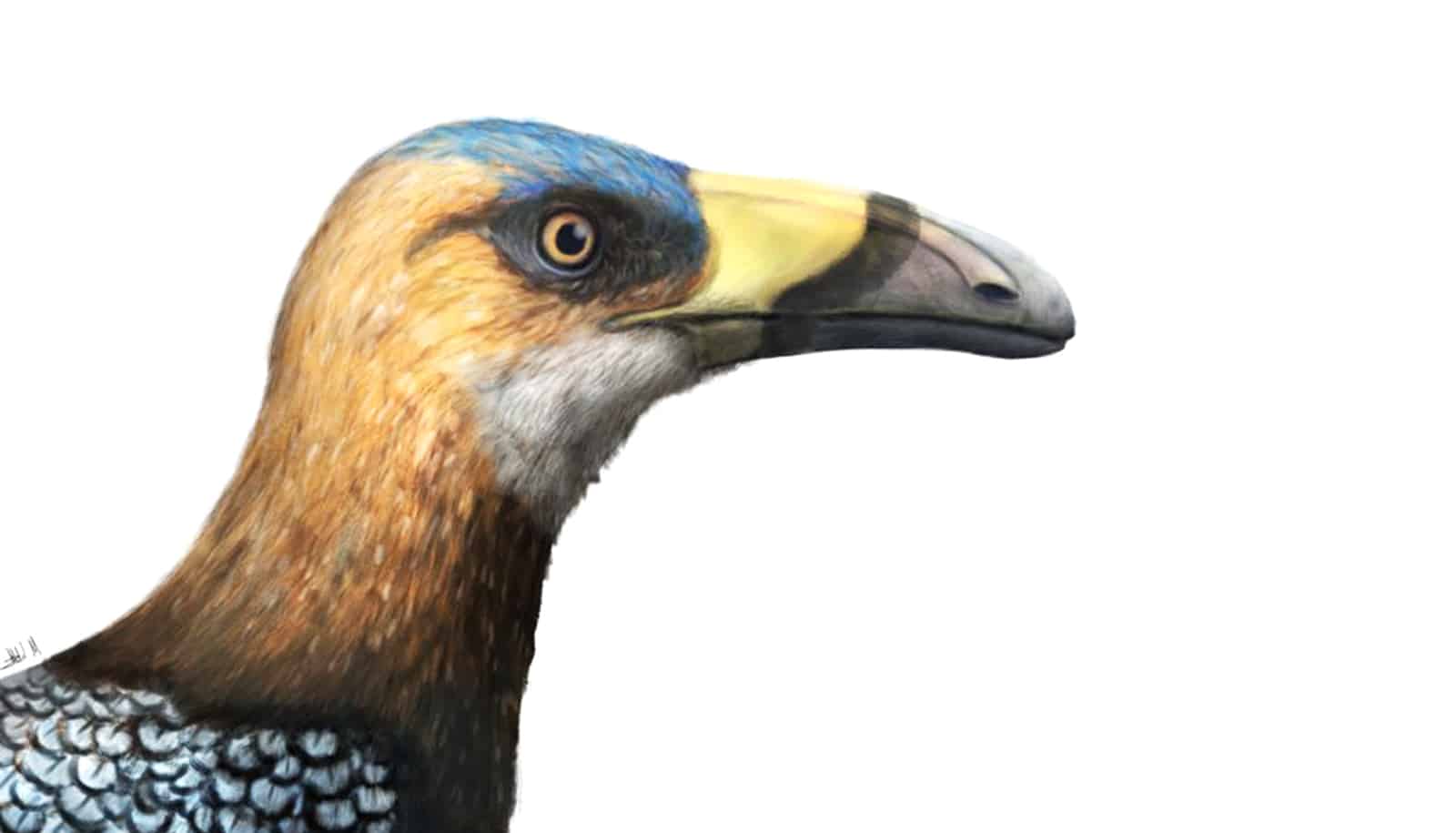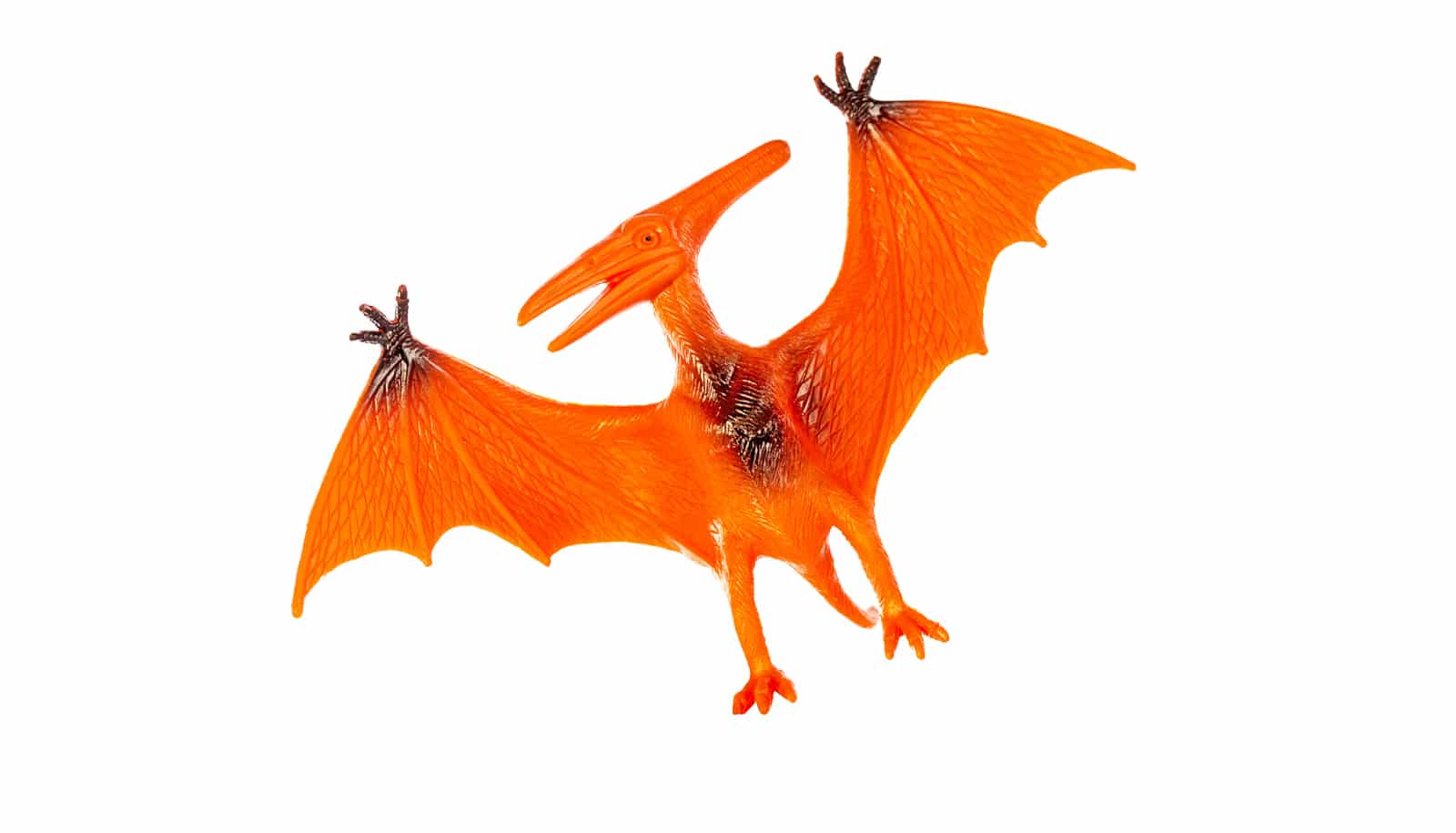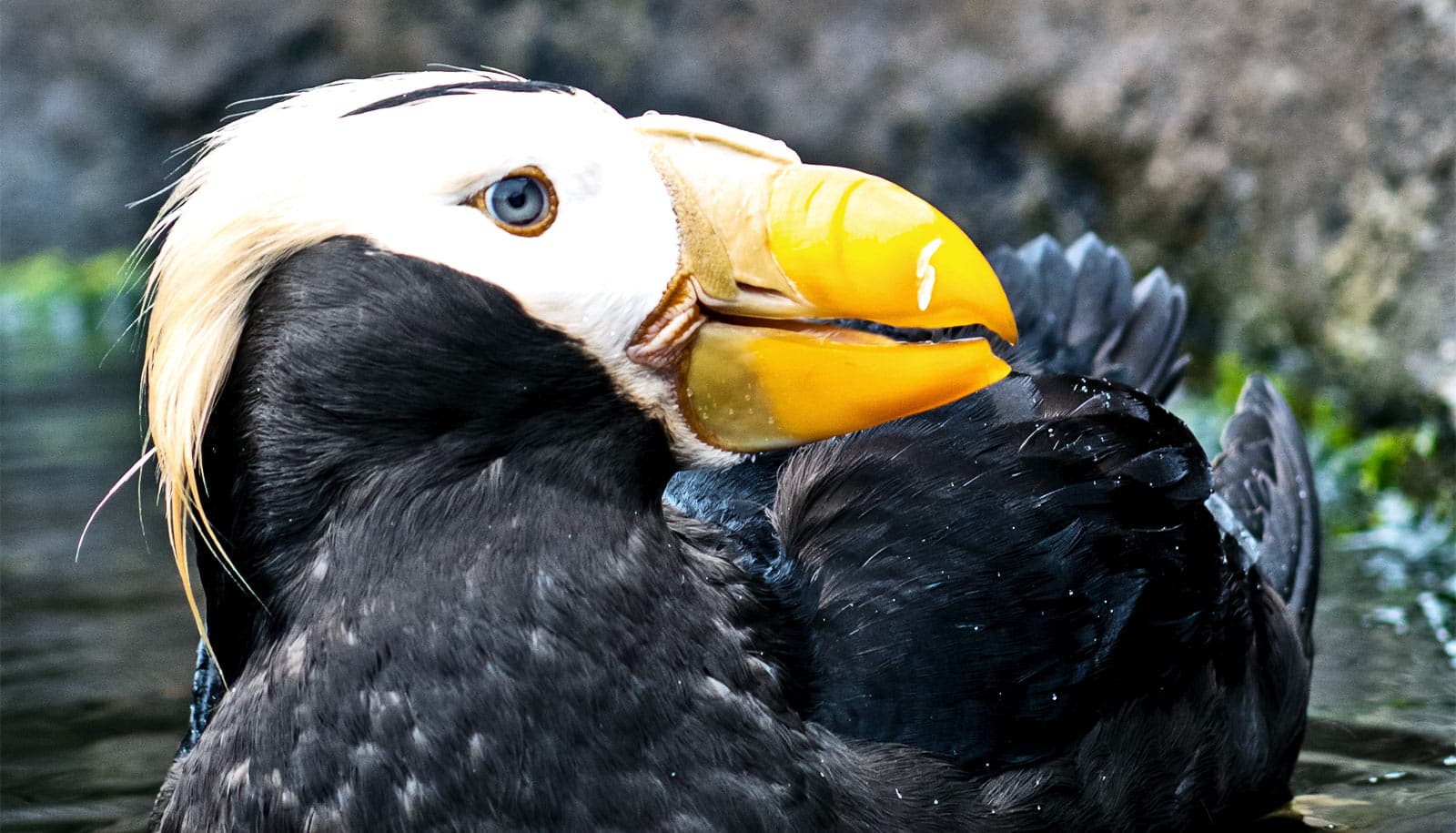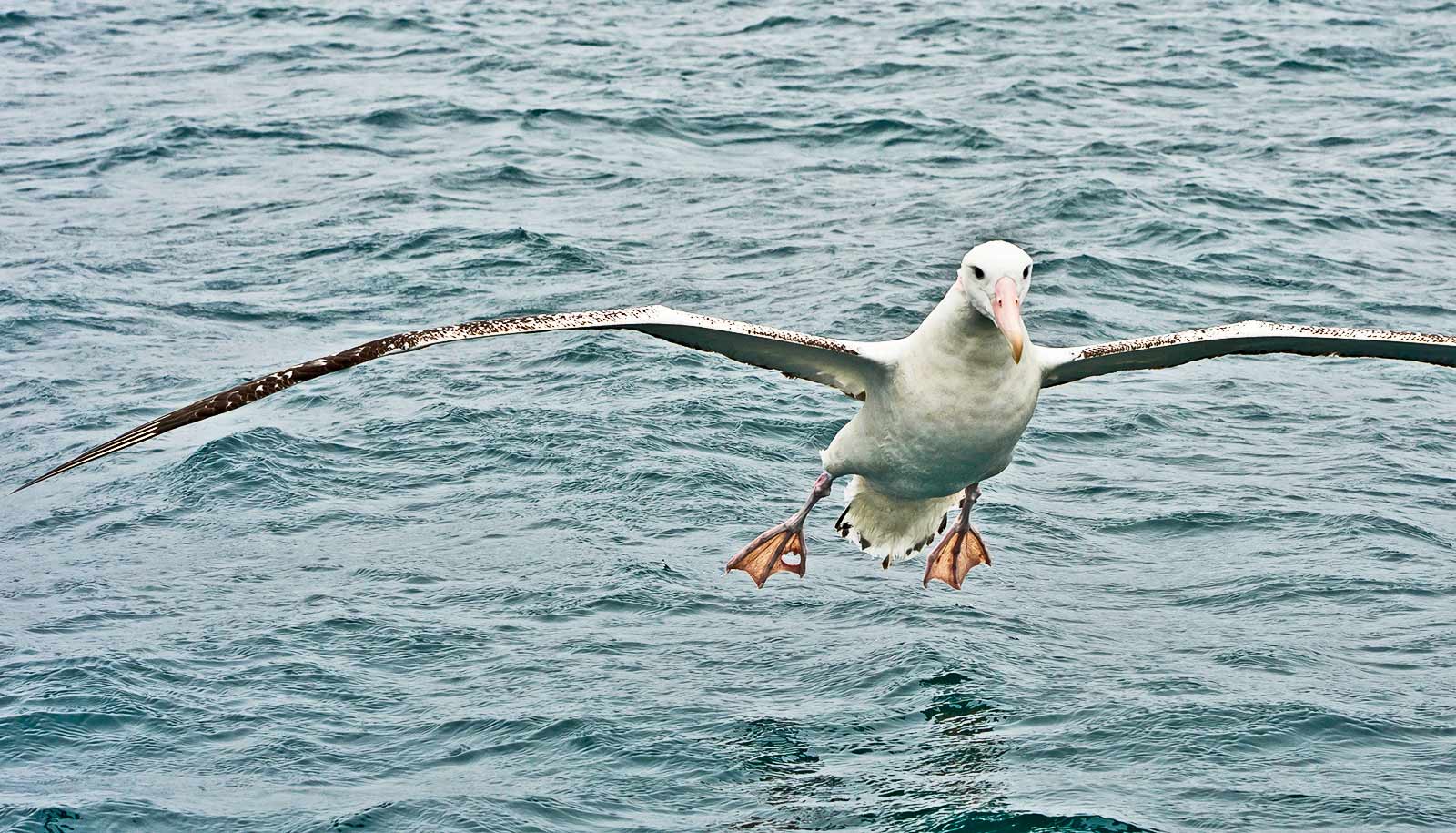A newly discovered, crow-sized fossil bird, Falcatakely, would have sliced through the air with a big, blade-like beak, report researchers.
The finding offers new insight into the evolution of face and beak shape in the Mesozoic forerunners of modern birds.
As far back as the mid-19th century, Charles Darwin’s observations on the diversity of beak shape in Galapagos finches influenced his treatise on evolution through natural selection. The new fossil bird discovery adds a novel twist on the evolution of skulls and beaks in birds, showing that evolution can work through different developmental pathways to achieve similar head/beak shapes in very distantly related animals.
The new bird is named Falcatakely forsterae, or just Falcatakely, a combination of Latin and Malagasy words inspired by the small size and the sickle-shaped beak, the latter representing a completely novel face shape in Mesozoic birds.
The new species is known from a single well-preserved but partial skull.
Bird skeletons are rare in the fossil record because of their lightweight bones and small size. Bird skulls are an even rarer find. Nevertheless, Falcatakely is now the second bird that the team has discovered from this region of Madagascar.
“We don’t really know why certain beak shapes evolve, but we do know they are used for a multitude of functions such as object manipulation, feather grooming, feeding, and other life-sustaining behaviors,” says coauthor Alan H. Turner, associate professor in the department of anatomical sciences in the Renaissance School of Medicine at Stony Brook University.
“In the case of Falcatakely, that was probably the same and it is significant to discover that this early bird during the Cretaceous had such a uniquely evolved beak.”
Falcatakely and its big beak
Falcatakely belongs to an extinct group of birds called Enantiornithines, a group known exclusively from the Cretaceous Period and predominantly from fossils discovered in Asia.
“…some modern birds like toucans and hornbills evolved very similar sickle-shaped beaks tens of millions of years after Falcatakely.”
“Enantiornithines represent the first great diversification of early birds, occupying ecosystems alongside their non-avian relatives such as Velociraptor and Tyrannosaurus,” explains Turner. “Unlike the first birds, such as Archaeopteryx, with long tails and primitive features in the skull, enantiornithines like Falcatakely would have looked relatively modern.”
The delicate specimen remains partially embedded in rock due to the complex array of lightly built bones that make up the skull in birds. Although quite small, with an estimated skull length of only 8.5 cm (about 3 inches), the quality of preservation is outstanding and reveals many important details. For example, a complex series of grooves on the external surface of bones making up the side of the face indicate that the animal hosted an expansive keratinous covering, or beak, in life.
“As the face began to emerge from the rock, we immediately knew that it was something very special, if not entirely unique,” notes Patrick O’Connor, professor of anatomy and neuroscience at Ohio University and lead author of the study. “Mesozoic birds with such high, long faces are completely unknown, with Falcatakely providing a great opportunity to reconsider ideas around head and beak evolution in the lineage leading to modern birds.”
A life reconstruction of Falcatakely might leave one with the impression that this is a relatively unremarkable bird. But it is underneath the keratinous beak that the evolutionary intrigue lies. But Turner and his colleagues couldn’t remove the individual bones of Falcatakely from the rock to study because they were too fragile. Instead, the research team employed high-resolution micro-computed tomography (µCT) and extensive digital modeling to virtually dissect individual bones from the rock. The 3D printing of these models was essential for reconstructing the skull and for comparisons with other species.
An unusual face
As the research progressed, it was quickly apparent that bones making up the face in Falcatakely are organized unlike those of any dinosaur, avian or nonavian, despite having a face superficially similar to a number of modern bird groups alive today.
All living birds build the skeleton of their beaks in a very specific way. It’s mostly formed by a single enlarged bone call the premaxilla. In contrast, most birds from the age of dinosaurs, like the iconic Archaeopteryx, have relatively unspecialized snouts comprised of a small premaxilla and a large maxilla. Surprisingly, in Falcatakely the researchers found this similar primitive arrangement of bones but with an overall face shape reminiscent of certain modern birds with a high, long upper bill and completely unlike anything known in the Mesozoic.
“It turns out you can make a modern looking beak in multiple ways,” says Turner. “The developmental basis for the skeleton of modern beaks didn’t need to be there for a ‘modern’ looking beak to evolve.”
Like a toucan
To explore how this type of convergent anatomy evolves, Turner and O’Connor enlisted the help of their colleague Ryan Felice, an expert on skull anatomy in birds and other dinosaurs.
“We found that some modern birds like toucans and hornbills, evolved very similar sickle-shaped beaks tens of millions of years after Falcatakely. What is so amazing is that these lineages converged on this same basic anatomy despite being very distantly related,” notes Felice, lecturer in human anatomy at University College London.
Falcatakely comes from latest Cretaceous-age (70-68 million years ago) rocks in what is now northwestern Madagascar, in what has been interpreted as a rough and tumble environment. That same environment also hosted a number of other bizarre animals, such as the pug-nosed, herbivorous crocodyliform Simosuchus and the recently described mammal Adalatherium.
“The discovery of Falcatekely underscores that much of the deep history of the Earth is still shrouded in mystery,” adds O’Connor, “particularly from those parts of the planet that have been relatively less explored.”
The study appears in Nature and includes scientists from Stony Brook University, Ohio University, Denver Museum of Nature and Science, University College London, Macalaster College, and the Université d’Antananarivo. Funding came from the National Science Foundation, the National Geographic Society, and the Ohio University Heritage College of Osteopathic Medicine/Ohio University.
Source: Stony Brook University



